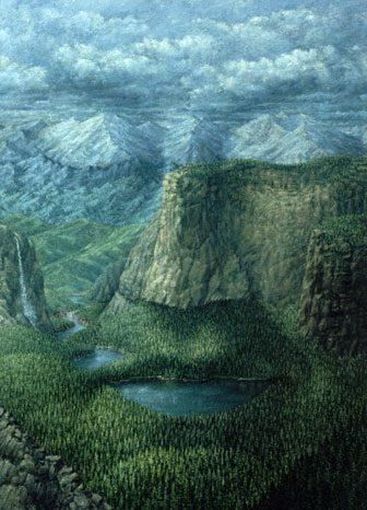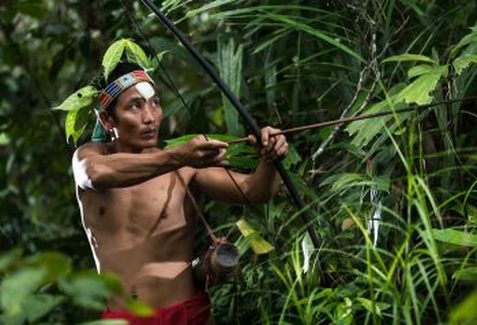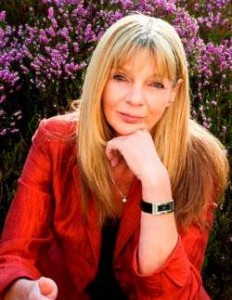Waking Up to the Sacred in Nature
and Reclaiming Our Earth Soul
By Christa Mackinnon : Guest writer for Wake Up World
30 March 2017
and Reclaiming Our Earth Soul
By Christa Mackinnon : Guest writer for Wake Up World
30 March 2017
|
“In the absence of the sacred, nothing is sacred. Everything is for sale.”
~ Oren R. Lyons, Faithkeeper of the Turtle clan When writing my latest book, I was surprised how difficult I found it to write a ‘short chapter about nature and sacredness’ for a readership that would be mainly urban. Now that the indigenous movement against the completion of the Dakota Access Pipeline brought the issue to the fore, I was reminded how urgently we need to re-connect with the sacred aspect of nature, not only because we face an ecological crisis and need to stand up in vast numbers to the ever increasing destruction of natural habitat and resources, but also because the separation from the nature aspect of ourselves, from our earth roots and souls, is contributing extensively to the dis-connection from our own wild nature and to our mental, emotional and physical suffering and dis-enchantment.
Indigenous views on the sacred in nature One of the most important teachings which we have been blessed with, is that people all over the world who are still rooted in Earth-based traditions have always maintained that being embedded in nature means being close to creation, the creator and the divine – that the sacred is directly experienced through creation and can be understood through observation and communication with the spirit(s) of nature. Whilst we, in our so-called modern world, have been for millennia led to believe that the divine is somewhere ‘out there’, indigenous teachers remind us that the sacred and divine is ‘right here’. The Aboriginal teacher and artist Miriam Rose Ungunmerr-Baumann expresses this when she writes that it is easy for her to experience God when she hunts, is in the bush or is amongst trees, as her people have been so aware of nature that it is natural for her to feel close to the creator. [1] And Carlos Perez Shuma, a Peruvian shaman, echoes this from the other side of the world when he says “… because in nature there is God and God talks to us in our visions.” [2] But not only have we been led to believe that the divine is ‘out there’, we have also been led to believe that we are separate from nature and, most importantly, that we are a superior species. Societies’ current spiritual beliefs, based on our religions, affirm human superiority instead of equality and the sacredness of all living beings. In Genesis, God says “Be fruitful and increase in number; fill the earth and subdue it. Rule over the fish in the sea and the birds in the sky and over every living creature that moves on the ground.” [3] In contrast, from an indigenous and shamanic viewpoint, everything in the web of life is not only alive and interrelated, but it is equally sacred as it derives from the same underlying (spiritual) field. The loss of this knowing has led to devastating consequences. The more we define ourselves as ‘separate’ from nature, the less we follow the intent of the spiritual dimension from which we have arisen, and the more we harm not only the manifested dimension of our Earth, which we can see in the ecological damage we have done, but also the spiritual and sacred dimension of the Earth and our own souls. Living in the right way Becoming aware of and letting ourselves experience the spiritual and sacred dimension, waking up to the divine in nature, leads inherently to everything being treated with respect, rather than being exploited for the gain of one species, namely our own. This doesn’t mean, however, that Earth-based cultures are sentimental about animals and plants. Animals are killed for food and plants are eaten, but understanding their inherent spirits leads to an honourable way of taking their lives.
When I was in Mongolia I was touched by how the nomadic herders, whose livelihood was rearing and slaughtering animals, honoured their spirits. You could find animal skulls everywhere being used to house the spirits of the slaughtered animals. Societies that are still Earth-based will also thank the animal spirits for giving their earthly body for human nourishment and often hold ceremonies in honour of them. When I worked with shamans in South America, no food was consumed without offerings to the spirits, and all leftover food was given away rather than binned. When they cut plants for healing or collected wood for a ceremony, they always left an offering in return and thanked the trees and the plants. In most traditions, including the North American, Inuit and Siberian, all edible parts of the animal are eaten, spirit guides are asked to lead the hunters to the animal spirit to thank it, and feathers, skins and furs are worn in ceremony. The contrast to our cruel factory farming and slaughtering of about 56 billion animals per year worldwide couldn’t be stronger. Once we reconnect to the divine in nature and begin to feel it, we will also appreciate the shamanic notion that nature teaches us right from wrong and that sustainability is directly connected to this. Eli Gatoga, a Cherokee chief, expressed this when he said, “The Indian made an effort to know of spiritual things from his own observations of nature, because all truth can be found in Nature.” [4] Slava Cheltuev, a shaman from the Dyayat Kypchak clan of Russia’s Altai mountains, says: “Our earth is sacred… living on the earth, each person must respect their place. We must respect it, protect it and it will give us life, it will give us health.” [5], whilst Oren R. Lyons, university professor, author of many books and Faithkeeper of the Turtle Clan, pulls it together stringently: “In the absence of the sacred, nothing is sacred. Everything is for sale.” [6] It is the sacred in nature that we need to re-experience, because the moment we understand the sacredness, we also realize that the right way to live is in balance and harmony with the natural laws that are inherent in the underlying field of the divine mother. This means respecting the preciousness of all life, giving something back whenever we take something, honouring the spirits within nature, contributing positively to the underlying energetic spiritual field and striving to live in a way that sustains all creation and helps it to thrive. Our earth souls are starving But it is not only the earth and the many life forms we harm with our ‘forgetting about the sacredness’ of all life. Within this cosmology of the sacred inter-connectedness of all life, it becomes obvious that the harm we do to nature within the web we also do to ourselves, to our body/mind and to our souls. If we look at human development, we realize that we are indeed beings of both nature and culture, and that our increasing neglect of the nature dimension of ourselves causes soul starvation and mental/emotional problems. My own observations as a psychologist, therapist and shamanic practitioner over many years have shown me how much disenchantment, emotional and mental imbalance and rootlessness modern people experience. This is supported by profound research, which also shows us the healing power of nature on the psyche. Nature symbolism is, for instance, dominant in healing experiences and people of all age-groups feel emotionally more stable, more peaceful, more alive, more compassionate and re-enchanted after spending time in nature. Nature also shows us alternatives to our consumer-orientated and technology-poisoned way of life. Bill Plotkin, a shamanic eco-psychologist who facilitates long, intensive wilderness camps, observes that “… healthy human development requires a constant balancing of the influences and demands of both nature and culture… By suppressing the nature dimension of human development… industrial growth society engenders an immature citizenry unable to imagine a life beyond consumerism and soul-suppressing jobs.” [7] And George Monbiot, the Guardian columnist and author of ‘Feral: Rewilding the Land, the Sea, and Human Life’, remarks: “It is no longer rare to meet adults who have never swum except in a swimming pool, never slept except in a building, never run a mile or climbed a mountain, never been stung by a bee or a wasp… We are separated from the world by a layer of glass…. in our temperature-controlled enclosures, all can be reduced to abstractions.” [8] Unfortunately our longing for nature is increasingly pushed into the subconscious. Only when we are encouraged to dig a bit deeper do we realize that our mind still associates being powerful and wild, being at home, feeling safe, peaceful and healthy, with being in nature. In my practice I have never experienced anybody who, when asked to find their place of power, sanctuary, peace or healing, visualized a crowded city, their place of work, a shopping mall, a club or any other place in our urban world. People of all ages and social backgrounds visualize a place in nature. The connection to nature is not only important for our mental and emotional wellbeing but also for re-experiencing the ‘sacred wild’ within ourselves. As we begin to reconnect consciously with nature, we recognize that our Earth soul is indeed wild and needs to be allowed to tune into where it lives, namely the vast and beautiful realms of nature, in order to be nourished and reflect itself back to us. Every time we connect with nature in a sacred way, we reinforce the sacred within us, nurture our soul and give ourselves a chance to experience ‘being home’. So, why am I writing about this? Well, mainly to stress that all of us who seriously want to become whole and make a difference, need to make time to be in nature. We need to focus on learning from nature, be inspired by it, revitalize and re-energize our natural powers, quest for vision, tune into the seasons and use the many ways and means open to us, from wilderness camps to vision quests, from fire ceremonies to connecting with the underlying spirit essences of trees, plants, mountains, rocks, water, star and planets. Above all we need to remember, in our urban technological world and life styles, that re-experiencing the divine in nature – and within ourselves – is necessity if we want to become whole and agents of change. References:
Also by Christa Mackinnon: |
About the author:
|
Christa Mackinnon holds a Master of Science in psychology and is a family counselor, clinical hypnotherapist and shamanic teacher. She has worked as a psychologist, therapist, trainer, lecturer and trauma consultant internationally for 25 years, and is an honorary teaching fellow at the University of Exeter in the UK.
Christa sees her current work as ‘Bridging the Worlds’ between the ancient shamanic and the contemporary therapeutic. Based on her ground-breaking book on the subject matter, she facilitates Continuing Professional Development (CPD) courses for professionals, speaks at conferences, and lectures widely. She also facilitates courses and retreats for women and is currently in the process of writing a new book, which will be about the feminine. Christa is the author of three books:
Christa can be reached via her website www.christamackinnon.com This article is re-posted on 'Ascension Now' with the kind permission of Christa Mackinnon. |


